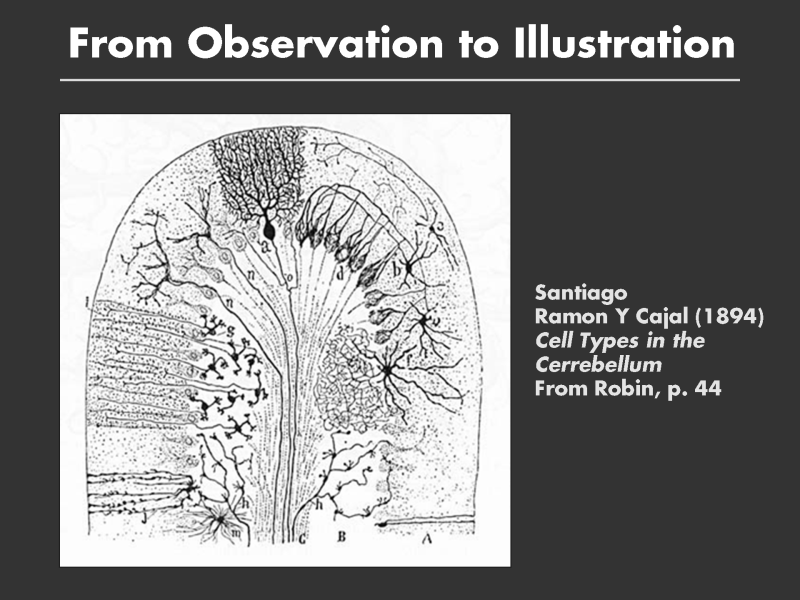
Here one of my favorite illustrations that I remember from my graduate school days when I was studying biophysics and neuroscience.
This illustration by Cajal shows the basic cell types of the cerebellum. The anatomy of each cell is beautifully drawn. Note how the layout suggests information flow, how connections between different types of neurons are emphasized, and how texture is used to provide structural context. This picture very effectively conveys what was known then about the anatomical structure of the cerebellum.
While creating the drawing, Cajal synthesized many individual views into a single overview. He emphasized the important information, and deemphasized the unimportant. Cajal?s work shows the interconnected processes of observation and illustration, and of illustration and abstraction.
Webster?s gives the following definitions of abstraction,
(1) Disassociated from any particular instance
(2) Having only intrinsic form and not being considered with pictorial realism
Abstract thinking is one of the distinguishing aspects of human thinking. Moreover, abstract visual representations are one of humankinds greatest inventions. Abstraction is the single most important concept in visualization.
I find it mildly amusing that many researchers who work in scientific visualization do not appreciate what the researchers in information visualization are trying to do ? to develop visual representations of abstract data and concepts. It?s ironic since the most intriguing abstractions I know arise in science. Does business intelligence have any abstract concepts as brilliantly conceived as shockwaves, general relativity, quarks, retinal mappings, and dendritic fields?
Reference:
[1] Histology of the Nervous System of Man and Invertebrates, Santiago Ramon Y Cajal, CD version, http://www.oup-usa.org/isbn/0195074017.html